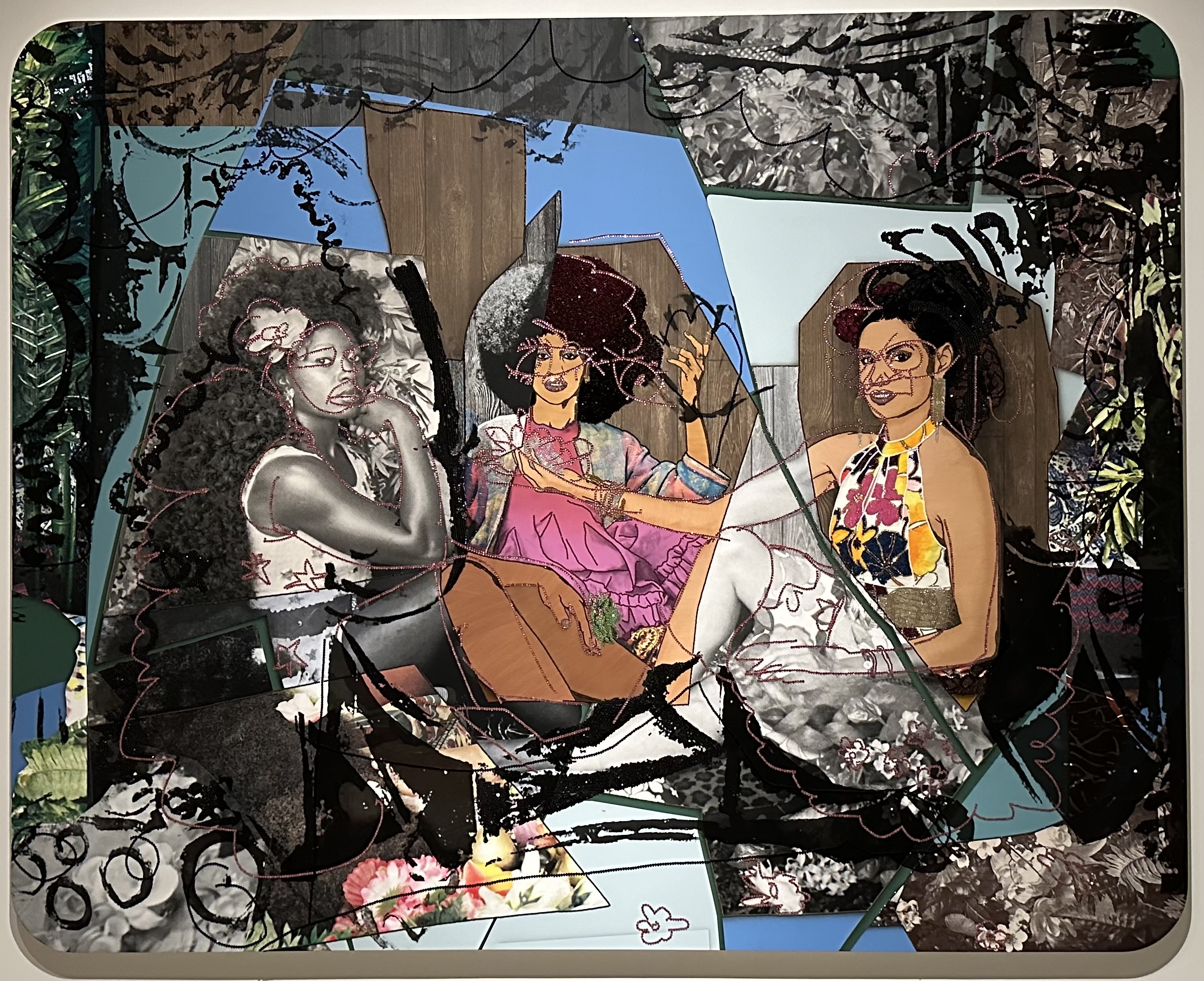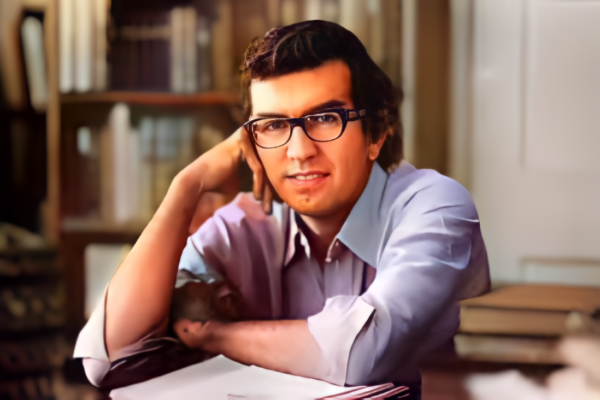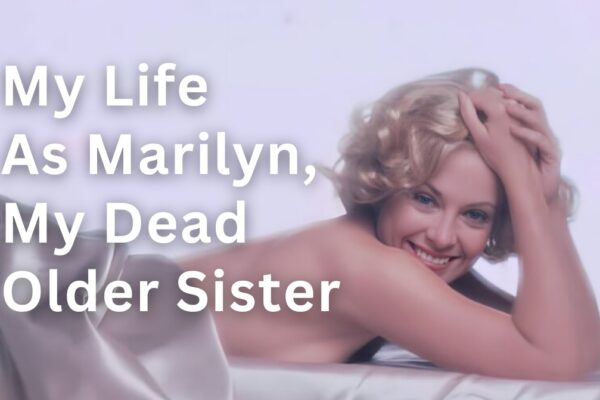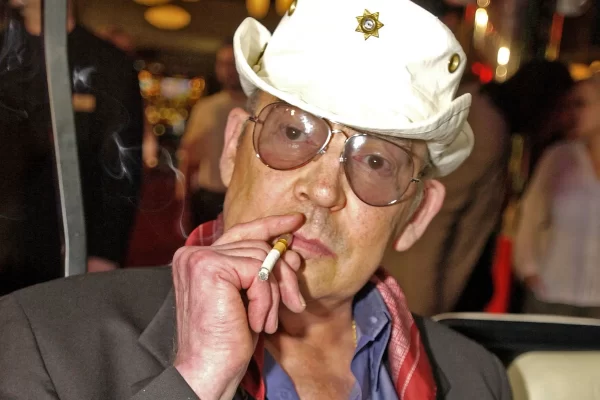By MARY FRANCES DAVIDSON
Artist Mickalene Thomas begins her current exhibition at The Broad Museum in Los Angeles with a large banner stating, I Was Born To Do Great Things.
Influences from art history are clear throughout the show. Since early in her career, Thomas has challenged, modernized, and re-created an art world that has lessened or denied works of Black and queer people.
“Most of the theoretical inspiration for my work is rooted in self-discovery, celebration, joy, sensuality, and a need to see positive images of Black women in the world,” Thomas has said.
Reinterpreting works from such historic greats as Francisco Goya, Gustave Courbet, Édouard Manet, and Jean-Auguste-Dominique Ingres with muses, who are also her friends, as subject matter is an essential focus for Thomas.
The artist places her muses in collage-style, large format, usually 10’ by 12’ or so, images facing the viewer directly, elevating them to equal terms with the usual treatments and portrayals in art history which left out Black people.
Often, her friends appear again and again over time in various mediums such as appearing in a photo shoot, then years later in a large format painting.
The collage style with splashes of glittering rhinestones for her subject’s hair and makeup, became a focus for Thomas in graduate school, and give her works a handmade, intimate feel.
She says her rhinestone and other such collage elements are meant to honor and celebrate self-made and self-affirming beauty and glamor.
Such materials are offered by Thomas as a way of thinking about dressing up, and using makeup as a part of identity.
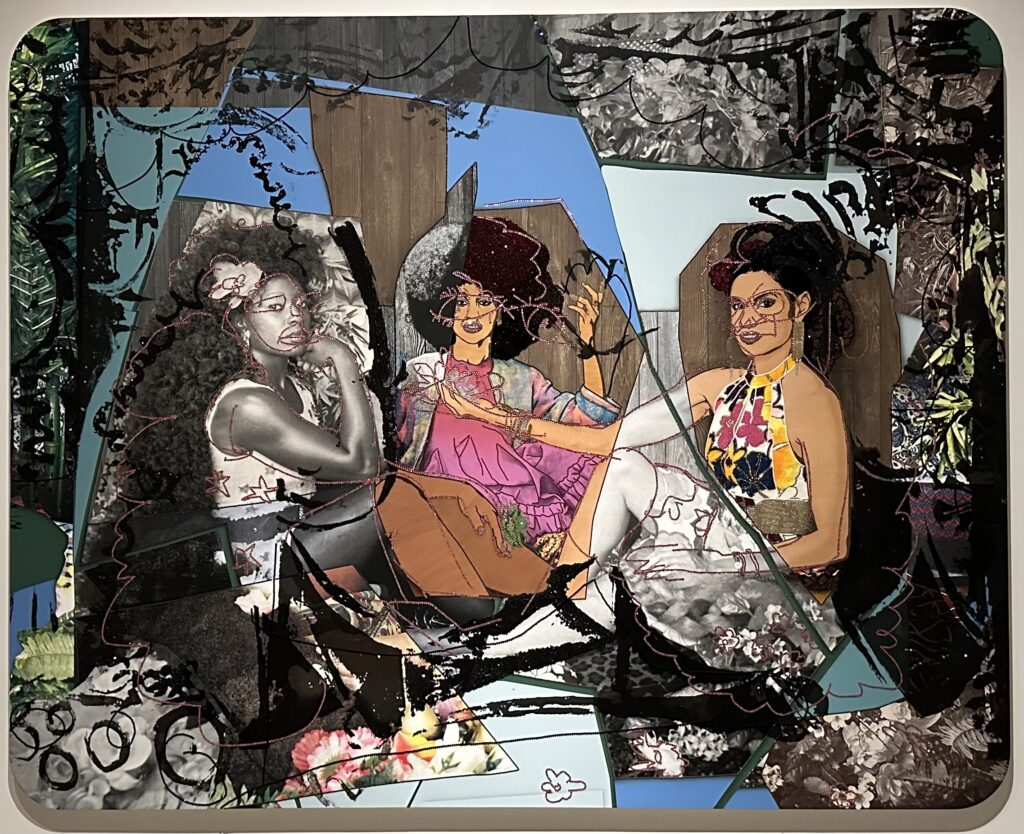
Thomas’ Le Déjeuner sur l’herbe les Trois Femmes Noires d’aprés Picasso not only reinterprets the original Manet’s 1863 Le Déjeuner sur l’herbe (Luncheon on the Grass) but also Pablo Picasso’s interpretations of the painting from the late 1950s and early 1960s.
Thomas takes over the tradition with her muses to generate a new narrative of art history.
“We, too, can relax and be seen doing so and have it be empowering and validating for our sense of self,” she said.
Thomas recreates the Le Dejuener’s picture plane depicting Black women with qualities she wants to accentuate: strength, ambition, and desire.
With a series titled, “The Wrestlers,” Thomas explores multiple sides of her own personality.
Only she is depicted in the rhinestone-endowed paintings.
In works that feature two people, only one face — Thomas’ face — is shown.
Within the self-portraiture, the artist considers the friction between one’s body and one’s mind, a manifestation of inner conflicts.
Ultimately, the complexities of being perceived as a strong, fierce, sexual woman, and portraying such strengths as worth struggling to maintain, is the series’ focus, according to Thomas.
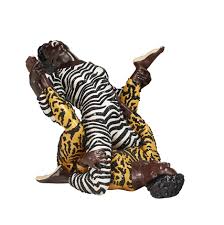
One piece is named after a wrestling magazine, “Brawlin’ Spitfire,” and many references to the sport are embraced, including classical sculpture with wrestling as its subject matter. Photography in Theo Ehret’s book “Exquisite Mayhem”:
The Spectacular and Erotic World of Wrestling, inspired some of the poses in the series.
Thomas cites her mother and childhood as major artist influences and inspiration.
Personal items from her mother’s home and bronzed articles of clothing belonging to her mother are featured in the exhibit.
Sandra Bush, Thomas’ mother, who, at 6’1″, was part of the fashion and modeling world in New York in the 1970s, raised her children as Buddhists.
She exposed Thomas to art early on by enrolling her in after-school programs at the Newark Museum, and the Henry Street Settlement in New York.
As well as the importance of her mother, Thomas includes other aspects of her life in this show, inviting the viewer not only to experience her artistic expression, but her personal history.
Life-sized photos and installations of apartment buildings from her childhood neighborhood in Newark, New Jersey, where she was born in 1971, act as an entryway to the show and allow visitors to understand the importance of place and time in Thomas’ work.
Also, throughout the exhibit are 1970s-style installations and seating areas including actual books which influenced Thomas, such as “Bad Feminist: Essays” by Roxane Gay.
One feels invited into Thomas’ comfortable, home-like element throughout the show.
The artist’s struggle with sexual identity, as well as her mother’s addiction to drugs, burdened their mother-daughter relationship, which Thomas eventually captured in a documentary in her mother’s honor called, Happy Birthday to a Beautiful Woman: A Portrait of a My Mother.
As the show continues with many other aspects including a multi-screen digital video piece from 2016 featuring Eartha Kitt, as well as some of Thomas’ muses, singing Angelitos Negros (Black Angels), Thomas joins Kitt imploring religious and other artists to include Black angels and people rather than leaving them out of paintings, murals and other art.
The message is clear, Thomas was “born to do great things” and she is expanding her culture and world and making her mark around the globe.
All About Love is showing at The Broad Museum, Los Angeles through September 29, 2024.
MARY FRANCES DAVIDSON is a writer-at-large for LAMonthly.org. She attended the USC Annenberg School of Communication and Journalism. She could be reached at davidson.mary@myyaho.com
thank you very much

